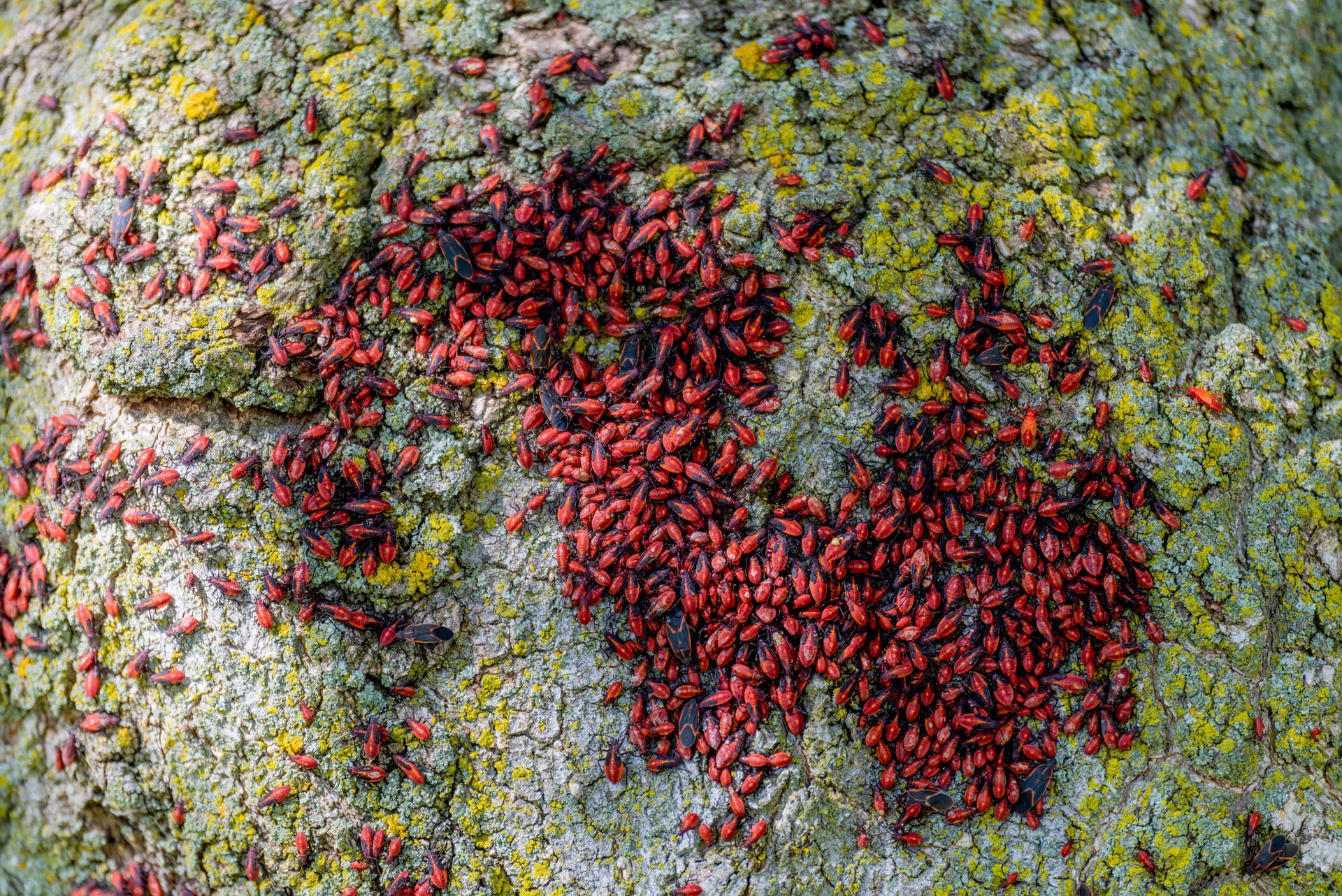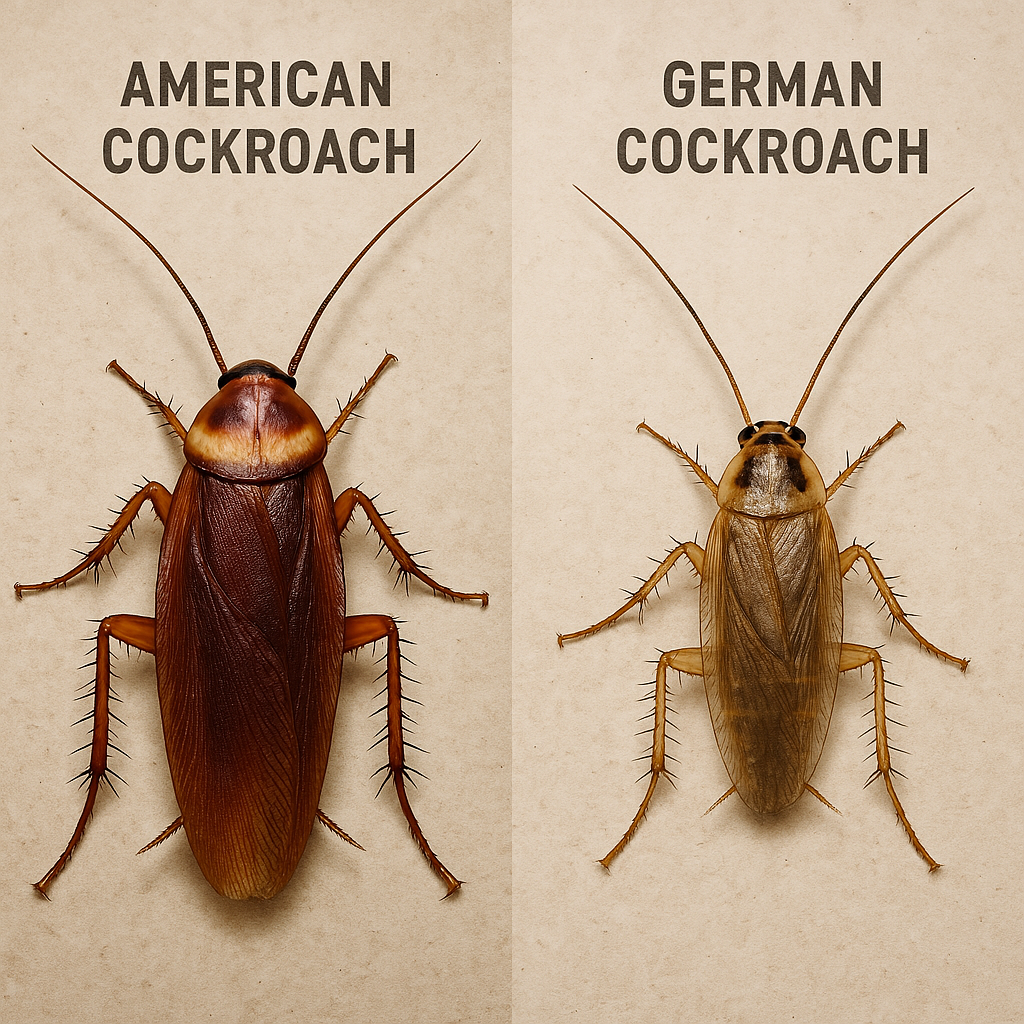What Do Boxelder Bugs Eat?

Boxelder bugs get their name from their primary source of food, the boxelder tree. While these bugs are also known to feed on the fruit of other trees, the boxelder tree and its seeds and sap is the main staple of the boxelder bug diet. In addition to providing these bugs with food, these trees also provide shelter and a place to lay eggs during the warm months of the year. When temperatures drop, boxelder bugs will start to search for a warm place to overwinter. This sometimes results in boxelder bugs invading homes. When this occurs, boxelder bugs don’t really have a need to feed since they are mostly dormant and hibernating. Once temperatures start to rise, the boxelder bugs will return to their boxelder trees where they can continue to feed and breed.
Boxelder Bug Diet
Boxelder bugs primarily feed on the seeds, seedpods, and sap of the boxelder maple tree. It is important to note that boxelder bugs do not actually eat the plant themselves. Instead, they drain the fluids by sucking out the sap and juices found in seeds, fruits, and leaves of the trees they target. While the boxelder tree is their preferred food, they will also occasionally feed on the juices of other maple and ash trees as well as fruits from apple, cherry, and plum trees. While these other trees offer other sources of food, boxelder bugs still need to be close by boxelder trees to reproduce and continue their life cycle.
How Do Boxelder Bugs Feed?
The way boxelder bugs feed is very similar to that of a mosquito. Instead of chewing the skin of a host, the boxelder bug pierces the skin of leaves, plants, and fruits. Like mosquitoes, boxelder bugs have a long proboscis that they use to achieve this. This straw like proboscis is used to suck out the sugary fluids that contain the nutrients that the boxelder bugs need to survive.
Common Foods That Boxelder Bugs Eat
When boxelder bugs hatch in spring, they primarily feed on the seeds of the boxelder trees by extracting the fluids from the seeds. As they develop, adult boxelder bugs will also feed on the juices found in the leaves and sap of the boxelder trees. If populations become too dense, boxelder bugs can also search out other trees like maple, ash, apple, cherry, and plum trees for sustenance. They are also known to feed on other fruits like grapes and strawberries. If they can find alternative sources of food, they will extract fluids from the leaves and fruits of these other plants.
What Do Boxelder Bugs Drink?
Boxelder bugs feed on the fluids and juices that they extract from the plants they feed on so there is no need for boxelder bugs to drink liquids. This means that boxelder bugs do not need to secure an alternate source of moisture or water like other bugs. Instead, boxelder bugs are perfectly content getting their hydration from the chlorophyl they extract from leaves, the sap they extract from trees, and the juices they extract from fruits. These fluids contain all the hydration and nutrition that boxelder bugs need to survive.
Do Boxelder Bugs Eat Other Bugs?
Boxelder bugs are herbivores that do not have the right parts to eat other bugs. They lack mandibles, pincers, and a chewing mouth that would allow them to feed on other insects. Their mouth is made up of a singular proboscis that can be used to extract fluids from plant life. Even if they needed to defend themselves, boxelder bugs do not have the ability to bite another creature.
Do Boxelder Bugs Bite Humans?
Boxelder bugs do not have the right parts to bite a human in a way that can cause damage. The functionality of the boxelder bug mouth limits these insects to piercing the weak skin of plants, leaves, and fruits. Hypothetically, a boxelder bug’ proboscis could pierce human skin but there would be no reason to do so since the proboscis isn’t used as a defense mechanism. Even if there was a reason to try and protect themselves, boxelder bugs do not have a strong enough proboscis to penetrate human skin in a way that would inflict any kind of pain or discomfort.
Do Boxelder Bugs Cause Damage?
Are boxelder bugs only a threat to boxelder trees? Or are they capable of causing damage to other things? The answer to both, is that boxelder bugs are hardly a threat to even boxelder trees. They cause so little harm to plant life that box elder bugs are not considered an ecological threat. They are generally considered a neutral nuisance pest that does neither harm nor good.
Do Boxelder Bugs Eat Plants?
Boxelder bugs don’t actually eat plants but they do feed on the fluids inside of different plant species. Their primary target is boxelder trees, but they are also known to feed on other maple and ash trees, stone fruit trees, grape vines, strawberries, and certain types of grasses. In each of these plants, the boxelder bug only feeds on the juices they can extract from the leaves, fruits, and seeds. This can result in some superficial damage and discoloration but doesn’t have a big impact on the overall health of the plant.
Do Boxelder Bugs Eat Fruits?
Boxelder bugs will target certain fruits like apples, plums, cherries, peaches, pears, grapes, and strawberries. They don’t actually eat the fruit flesh but will instead extract the nutrient rich juices. They use their proboscis to pierce the delicate skin of the fruit where they will suck out any fluid they can. This results in the fruit skin becoming slightly damaged where the boxelder bug penetrates the skin. If enough boxelder bugs feed on a fruit, it will cause it to dehydrate which can result in the fruit falling off early. When large infestations occur, this can have devastating impacts on orchards, vineyards, and gardens.
Do Boxelder Bugs Eat Vegetables?
While it isn’t common for boxelder bugs to feed on vegetables themselves, they tend to be drawn towards the leaves of certain vegetables. This can have devastating consequences for the vegetables because these plants rely on their foliage remaining healthy to produce strong harvests. If the vegetable plants in a garden have their leaves destroyed by boxelder bugs, then the fruiting bodies will suffer which will result in poor harvests. The types of vegetable plants that are at most risk are sweet potatoes, cucumbers, eggplants, peppers, zucchini, squash, green beans, okra, and chard.
Are Boxelder Bugs Wood Destroying Insects?
Even though boxelder bugs feed on boxelder trees, they do so by extracting fluids from leaves, sap, and seeds. They don’t actually eat the wood like termites and other wood destroying organisms. This applies to all of the different species of plants and trees that boxelder bugs feed on. They are only looking to feed on the nutritious juices they can extract using their proboscis.
Do Boxelder Bugs Ruin Linens and Clothing?
Boxelder bugs are not known for causing damages to linens, fabrics, and clothing like moths and carpet beetles. The mouth parts that boxelder bugs use to feed on plant life are not capable of breaking down strong fibers that are found in woven materials.
What Do Boxelder Bugs Eat During Winter?
When temperatures drop, boxelder bugs prepare to go into a state of hibernation. This is likely a result of limited resource availability during winter months. During this dormant period, boxelder bugs will overwinter and not eat anything until temperatures start to rise. This is because their bodies have shut down and are not expending any energy to survive. When boxelder bugs are preparing for this time, they will search for a place that is warm enough to survive but is also a safe place to hide for a few months.
What Do Boxelder Bugs Eat Inside My Home?
One of the place that boxelder bugs will go search for a warm place to hide over winter is inside homes. Buildings inhabited by humans are often the perfect place for bugs like boxelder bugs to hibernate in. This is because they are kept relatively warm and if a boxelder bug can find a place to hide, they will be left undisturbed for several months. When boxelder bugs do find a place inside your home to overwinter, they will lay completely dormant. During this period of hibernation, they won’t feed on anything at all until temperatures start to heat up. Once spring comes around, the boxelder bugs will make their way back outside where they can feast on their favorite food sources, the boxelder tree.
How to Get Rid of Boxelder Bugs
Boxelder bugs are considered a neutral pest that do not cause a significant amount of damage. However, dealing with an infestation of any pest is something that home and business owners want to avoid. To get rid of boxelder bugs, it is important to remember that they can simply be collected and removed once they are discovered. If they are found inside, this can easily be done using a vacuum cleaner. In addition to collecting boxelder bugs and eliminating them, it is important to prevent further access to keep boxelder bugs from becoming a problem again. This can be done by sealing cracks and crevices, installing door sweeps, and repairing tears in window screens. Getting rid of boxelder bugs can be done by treating with insecticidal soaps and diatomaceous earth.
Contact EcoGuard Pest Management if You Are Dealing with Boxelder Bugs
If you are dealing with a boxelder bug infestation that has gotten out of control, it may be time to rely on professionals to implement treatment and prevention strategies. This will help keep boxelder bug populations under control and limit their access to inside your home. EcoGuard Pest Management has a team of licensed boxelder bug control experts who know where to look for signs of boxelder bug activity, how to treat these bug effectively, and prevent them from coming back and becoming a problem in the future. Call today to schedule an inspection.

















